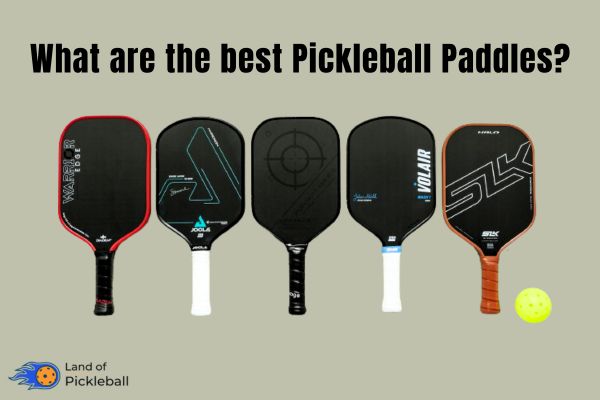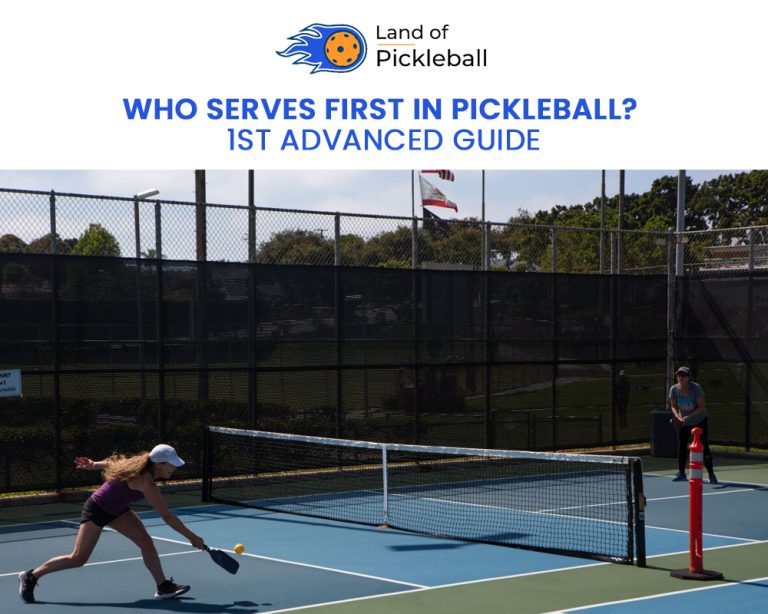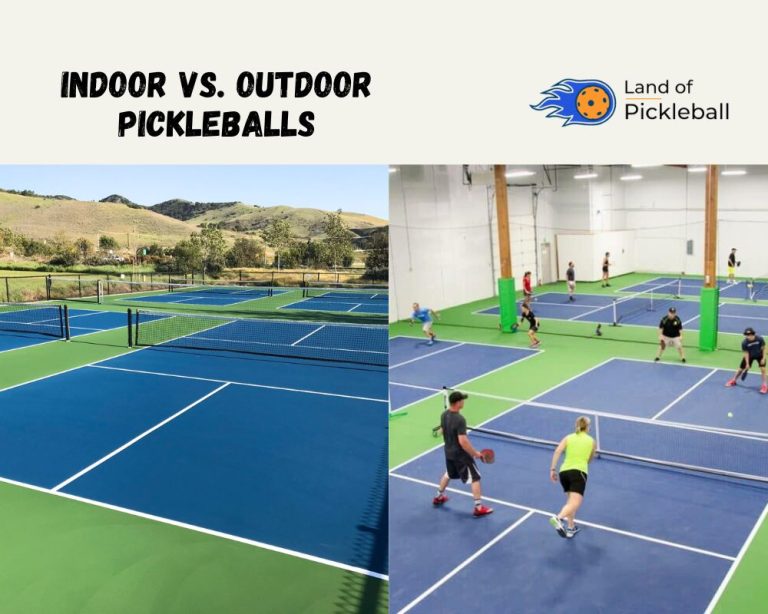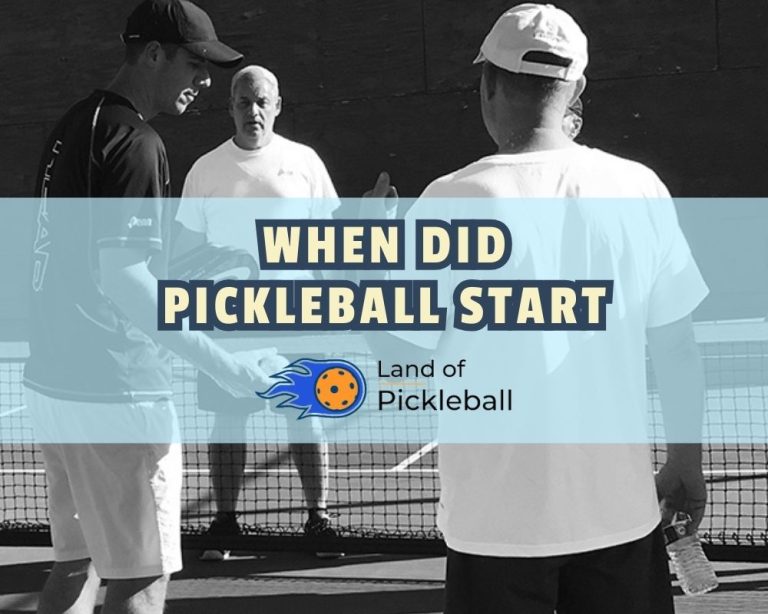What does a Pickleball Look Like?
Pickleball, a flourishing sport, remains unfamiliar to many despite its popularity. Though what does a pickleball look like? It is the usual approach.
Apple declared that Pickleball is gaining popularity globally. Its reach is enhanced in workout activities than tennis.
Hence, choosing the right equipment, especially the pickleball itself, is crucial for enjoying the game. The pickleball, a small green sphere, is a vital element in this growing sport. It’s solid like a wiffle ball and comes with holes and a smooth surface. This ball is crafted from durable plastic for performing a versatile workout during gameplay.
Introduction
Sports enthusiasts may have wondered what exactly a pickleball is. No, it’s not a pickled cucumber engaged in sports. Here, we will explore all the details, answering the question, “What does a pickleball look like? or What Does Pickleball Look Like” Stick with us, and you’ll be a pickleball expert in no time.
Pickleball is a dynamic blend of badminton, tennis, and ping-pong, that is played on smaller courts with oversized ping-pong paddles. You can enjoy it at various venues like in your backyards, DIY, Gym centers, YMCAs, and parks. Pickleball offers a joint-friendly, calorie-burning alternative that’s suitable for all ages. It originated in the 1960s and gained a true following within a short while.
View Further Details: What is Pickleball Sport?
What Does Pickleball Look Like?
Pickleball is a dynamic and enjoyable sport, that shares similarities with tennis, facilitating an easy transition for tennis players. In a singles game, two players volley a plastic ball over the net, aiming to avoid faults or out-of-bounds hits.
The game begins with an underhanded serve that must bounce once before the opponent returns it. Subsequent shots include strategic dinks or powerful smashes. The objective is to force your opponent into committing a fault, scoring points during your serving opportunity.
For instance, your successful sequence involves serving, allowing the bounce, executing a well-placed spin shot, and ultimately winning your point with a skillful mid-air smash. Conversely, you may hit the ball out of bounds on the return shot would grant the opponent the volley but not a point.

How hard is it to learn pickleball?
Well, the rules and learning of this sport Pickleball is straightforward for beginners. It was created to be inclusive, and suitable for all ages, skill levels, and athletic backgrounds. The fundamental Pickleball rules are simple and can be quickly grasped.
What is Required to Play the Pickleball?
What Does a Pickleball Look Like? Pickleball Ball
Pickleball balls resemble whiffle balls, though they are rounded rather than egg-shaped. These are lightweight and made of thin plastic with varying-sized holes. The plastic is slightly heavier than a whiffle ball.
Pickleball balls come in black, yellow, blue, or multicolor colors. Due to the holes on the surface, they have slower air movement, akin to badminton’s shuttlecock, unlike the speed of a tennis ball.
The Pickleball ball is as important in element as it is in any other sport. It impacts your play, the game’s pace, and even the strategies you may apply during playing.

Pickleball Anatomy
The International Federation of Pickleball (IFP) establishes official specifications for pickleball balls used in tournament play. Per IFP regulations, an official pickleball is required to:
Official Pickleballs for Tournaments
Periodically, brands enter agreements with national tours to designate the perfect balls for both recreational and professional tournaments. The professional pickleball association has secured a multi-year contract with the Onyx Dura Fast 40. Similarly, the USA Pickleball Association has entered a contract with Franklin, designating their X-40 as the official ball.

Pickleball Ball Costs
What are the main types of Pickleball?
Pickleballs come in diverse types to suit your preferences. You can view these options to find the perfect fit for your gameplay.

Best Indoor Pickleballs: Tourna Strike, Gamma Two-Tone

Best Outdoor Pickleballs: Onix Dura Fast 40, Franklin X-40

What to Look for When Choose the Pickleball Paddle
If you’re new to pickleball and finding the right paddle may prove overwhelming. Here’s a simplified guide to help you understand what to look for:
Types of Paddles
Paddles are made from graphite, fiberglass, or wood. Graphite Paddle or fiberglass paddles with honeycomb cores are common and suitable for most players. Wood paddles work well for physical education classes.
Price Range
Weight Matters
If you have arm issues or arthritis, a medium-weight paddle is recommended for less strain.
How to Choose Your Paddle?
Therefore, you can change the grip of the paddles for your comfort. Popular grip options include Gamma Honeycomb Grip and ProLite No-Sweat Diamond Grip.
Read More: Where to Buy Pickleball Paddles
Testing Paddles
Try paddles from others to find what suits you. Some stores allow a 30-day trial before purchase. Hence, you must pick a paddle that enhances your style – spin, power, or a balance of both.
Durability
You should invest in a durable paddle to avoid frequent replacements. A good pickleball paddle should withstand regular play for at least 3 years.
Budget Considerations
Beginner paddles are affordable, and for advanced players, higher-level paddles are available. Remember, the right paddle is like finding Cinderella’s slipper or Thor’s hammer – there’s one out there that fits you perfectly. Experiment, ask for advice, and find the paddle that feels just right for your game.

What Makes the Ideal Pickleball Paddle?
Once more, the best pickleball paddle is the one that suits your unique style of play. If you’re unsure where to begin your search among the multitude of options, consider these top picks:
For more budget-friendly choices, explore our selection of the best pickleball paddles under $100 (Reference).
Pickleball Court Logo and Markings
You need to know about pickleball court dimensions and logo for maintaining fair and consistent gameplay.
The official logo depicts a playful figure using a paddle to hit a ball. It appears on approved gear like nets, balls, and paddles, exposing the sanctioned play.
The main lines on your Pickleball court include the Centerline, baselines, sidelines, and the NVZ. NVZ is at the net, restricts volleys, and requires a bounce before returning. Sidelines down the sides, Baselines run along the back, and Centerline splits the court lengthwise.

The region in between sidelines and baselines is the serving area. It’s the zone where your serve must stand.
Adjacent to the net, the 7-foot non-volley zone prohibits volleys and mandates a bounce. This zone encourages longer rallies and discourages quick winners.
However, What does a Pickleball Look Like, is also associated with understanding the court layout, zones, and markings is crucial. Additionally, you can grasp the official rules for faults, lets, and gameplay elements. With the practice of Pickleball drills, the pickleball court becomes familiar.
Remaining Details: Pickleball Court Size in Feet
What to Wear for Pickleball Match?
You should choose the proper attire is vital for Pickleball. You must go for comfortable, flexible clothes that are breathable. Wear the right athletic shoes with an excellent grip to prevent slips. Moisture-wicking fabrics can keep you cool and dry during intense matches.

FAQs
Final Verdict
Pickleball balls differ from tennis and badminton. They’re plastic, with varying weights for indoor and outdoor use. However, these plastic ball has holes, larger indoors and smaller outdoors. Indoor balls move slower due to no weather impact, while outdoor ones are heavier to resist wind.
Now we are well-informed about pickleball appearance. This sport, popular since the 60s, offers easy learning, exercise, and socializing. It comes with simple rules that allow complex play. Try Pickleball for a fun, active hobby—discover its enjoyment and wonder why you didn’t start sooner. Ultimately, you’ve comprehensive information on what does a pickleball look like.







